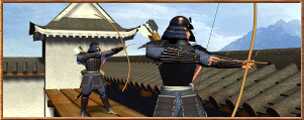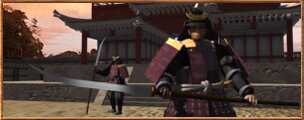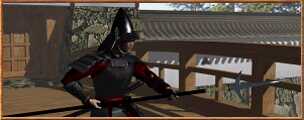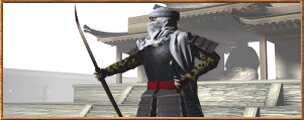Yamato culture (300 to 800 AD)
The Yamato period of Japanese culture is also called the age of the great tombs because of the appearance in these centuries of great tombs and tomb clusters, presumably for the burial of rulers and other elites. The name Yamato comes from the region of Japan that was the home of the first clan to consolidate rule over most of the islands. During the Yamato period, Japan accelerated its advance in technology by adopting the cultivation of rice, improving its pottery, developing iron working, building social hierarchies, and accomplishing a political, economic, and cultural consolidation of the islands.
Location
The hereditary lands of the Yamato clan are on a peninsula on the southwest coast of Ise Bay. This bay is located on the main island of Honshu, southwest of modern Tokyo.
Capital
Prior to the late seventh century AD, there was no permanent capital of Japan. Each king ruled from his own palace, which was usually abandoned following his death. As the Yamato began to adopt the Chinese system of governmental bureaucracy and organization, the need for a permanent seat of government arose. The first capital was founded at Fujiwara in 694 AD and served three emperors before being abandoned in 710. The second capital of this period was built at Heijo (west of modern Nara) and occupied from 710 to 784.
Rise to power
Chinese documents from the second century AD make reference to 100 countries existing in Wa, the Chinese name for Japan. By the third century the Chinese refer to a queen of Wa, probably of the Yamato clan, who had consolidated 30 countries under her rule. During this period, the Yamato clan consolidated its control over most of Japan with a combination of military conquest, intermarriage, and diplomacy.


Economy
Under the Yamato, the Japanese economy remained dependent on rice growing. It was primarily a barter economy and taxes were paid in rice, cloth, and other commodities by peasants who worked public lands. Beginning with the seventh century, coins were imported from China to facilitate tax collection. An attempt was made to mint Japanese coins, but rulers could not resist the temptation to debase the local coinage and it fell out of use.Religion and cultureNew concepts were added to the ancient Japanese beliefs and rituals during the Yamato period, including respect for clan ancestors and a mythology of divine ancestry for the Yamato dynasty. Under the influence of Chinese Buddhism propagated by Korea during the sixth century, the Japanese religion became more formalized as Shinto, the Way of the Kami. The kami were an infinite number of natural spirits and powers that could be called upon for aid or appeased when angered. The hierarchy of Shinto divinities was defined and the mythology was written down. The rulers of Japan descended from the sun goddess, the supreme Shinto deity.Early Shinto was positive and concerned with the present, not the past or an afterlife. It fostered a reverence for a natural universe that was seen as good and ethical. Evil was identified with impurity and the unnatural. Sincere honesty was the central virtue.
Government
During the Yamato period, tribal states of various sizes and power were brought together gradually by a dynasty of Yamato clan rulers. The leader of the Yamato in the second half of this period was known as the Daiõ, or Great King. The power of the Yamato was expanded and strengthened through blood ties within the clan, their apparent military supremacy, diplomacy, and manipulation of the sun myth that bestowed divinity on their ancestry.The different tribal groups or clans were the nobility or uji class. Serving the uji was an occupational/professional class called the be, who worked as farmers, scribes, traders, and manufacturers. The lowest class were slaves. Immigrants fit in among both the uji and be, depending on their skills and wealth.In the seventh century, the Yamato transformed the government of Japan based on influences from China. The Yamato sovereign became an imperial ruler supported by court and administrative officials. The uji class was stripped of land and military power, but given official posts and stipends. This political system remained in effect until around 1200 AD.ArchitectureThe outstanding architectural achievements of the Yamato are their tombs. These are mounds of earth in the shape of a keyhole if viewed from above. The largest tombs are found in the Yamato region of Japan, and this is further evidence of power emanating from that locale. The Nintoku tomb on the Osaka Plain rivals the Pyramids in size. The central tomb is 500 meters long and 35 meters high. It is surrounded by three moats with intervening belts of trees and covers 32 hectares. Stone burial chambers were excavated in the earth below the central tomb mound.Tombs thought related to the imperial family are now controlled by a government agency. Although some have been pillaged in the past, many remain unexcavated.


Military
Based on the large numbers of warrior figures, weapons, and pieces of armor found in burial tombs from this era, warfare was apparently a common feature of Yamato culture. Despite the existence of a dominant ruler, clan groups found reason for conflict. All adult men were available for military service and were required to serve for at least one year. The uji class provided the elite troops and officers for armies.Warrior figures from tombs are shown wearing full body armor and visored helmets. The most commonly found weapons are swords, spears, and bow quivers. Horse figures are also found in abundance, suggesting the existence of cavalry. The sudden appearance of horses in burial goods around the fifth century has led to the hypothesis that Japan was invaded by a cavalry army at that time. It is more probable that the horse was an import that became a status symbol for the elite who were most likely to receive a ceremonial burial. The elite uji class made up the cavalry of the period because they could afford the horse and equipment.

Legacy
The Yamato period is remembered for the sun goddess mythology from which all later emperors of Japan claimed divine ancestry. The Yamato period also formalized the Shinto religion that would compete with imported Buddhism to the present day. Most modern Japanese consider themselves descendants of the Yamato. The great tombs spread about the countryside are the most material legacy.
Return to Home Page
The Babylonians | The Ancient Choson | The Egyptians |The Hittites | The Minonians | The Persians |
The Phonecians | The Senate and People of Rome & The Roman Empire | The Greek Cities | The Carthaginians |
The Shang Dynasty | The Summerians | The Yamato